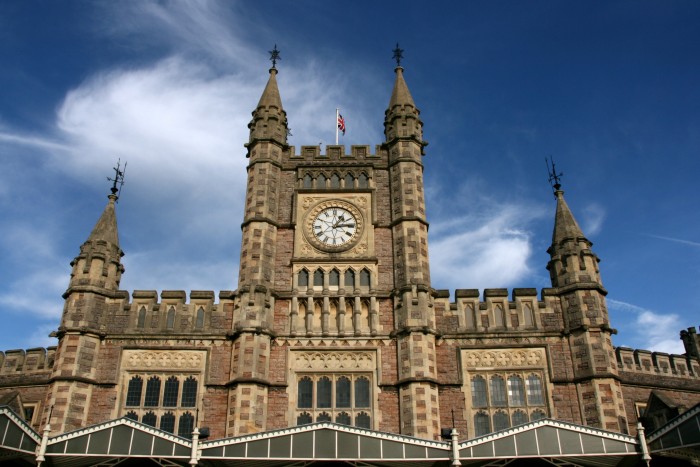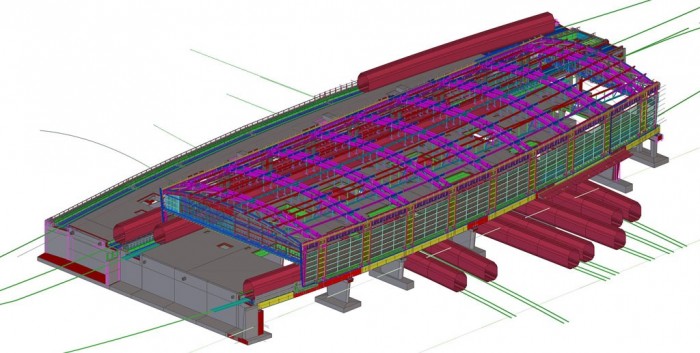ZNAPZ discuss the crucial role of railway stations in the functionality of rail networks.
We have been writing about Asset Management in the Railway Industry, the Infrastructure and the Trains (Rolling Stock). However there is one important aspect that we haven’t highlighted yet: The Railway Stations.

Stations play a crucial role in the functioning of the Railway moreover they are often the most beautiful architecture in a city. From an Asset Management point of view stations have many functions, a social one, a journey starting / ending point a train repair / control point and many more. One other point standing out Stations have a long lasting life, which indicates that we are still gaining Asset Knowledge, what was good yesterday isn’t good today anymore. This is not just the capacity of the station, but also the changes of requirements. In the beginning stations didn’t have electricity, today they have, they didn’t have telephones, than the telephones came and left again with everyone having a mobile phone, but this requires now a sophisticated communication network capacity.
The life of a railway station
Stations are being build, being maintained, redesigned and sometimes demolished. These are all steps in the life on the Asset, fulfilling the function this Asset is expected to deliver. How to do this against the lowest possible cost over the life of a Station, while managing the risk of Failure and operating at the lowest possible cost is the challenge.
First and foremost the requirements of a Station need to be well defined. This should be entered in a system, since this will be the Values we will manage over the lifetime of the Asset. Second we will need to define how to maintain all the functions of the Station. Best is this done with the “First Time Right” principle. Having well informed staff maintaining the facility. Data management is a key ingredient of these activities. Who needs what information why and when are questions that should be answered to enable the staff to do proper maintenance and with this good Asset Management.
When we have buildings, BIM comes into play. BIM, Building Information Management is telling us all the crucial information about the building that we need to know to maintain the building right at the first time. Having 3D visibility how the building is designed and constructed and understanding the relationships between all the various components. With this graphical representation, which allows to drill down or move out, it becomes easier to define and manage the relations between the various elements of the building. Not only from a materials perspective, but also from a financial or maintenance perspective. Knowing what maintenance is required in the various parts of the building. And what maintenance is the same or similar. This is a huge contributor to optimize our maintenance activities. The maintenance will be focused to achieve the three key Asset Management elements: one to maintain the required function(s) of the Station, two to minimise the risk of non-functioning or non-conformance and three to execute this Asset Management at the lowest cost over the lifetime of the Asset.

For this it is very important to understand the unit costing that plays a role in Building Management, how much cost a roof and what maintenance frequency is required by roof types. How much cost an elevator or escalator and again what maintenance is required and what are the risks we like to mitigate.
Learning from the assets
With the ageing of the Assets we learn new behaviour of the Assets day by day. Recently we discovered that the cement used in a number of buildings becomes poreus. This caused and is causing leakage in the areas occupied by Tenants and it is costing the Asset owners a lot of money in lost revenue of the Tenants rent and the repair cost. If known, which we do now, they could have anticipated on this unknown risk earlier during the lifecycle of the Asset and injected the cement with a protective coating.
Asset Management demonstrates also for the third element of the Railway Industry, after the Tracks and the Trains to be a good methodology to protect the Value of the Assets. Getting a better result from day one, having full transparency of the risks, cost and values of the Assets and a good understanding what spend delivers the highest value.
ZNAPZ has proven to understand the Asset Management requirements of the Railway Industry and each of its components. Based on our understanding we deliver information systems that support the Rail Industry on every step of their Asset Management for all their various Asset Types.
For more information, visit: www.znapz-assetmanagement.com















